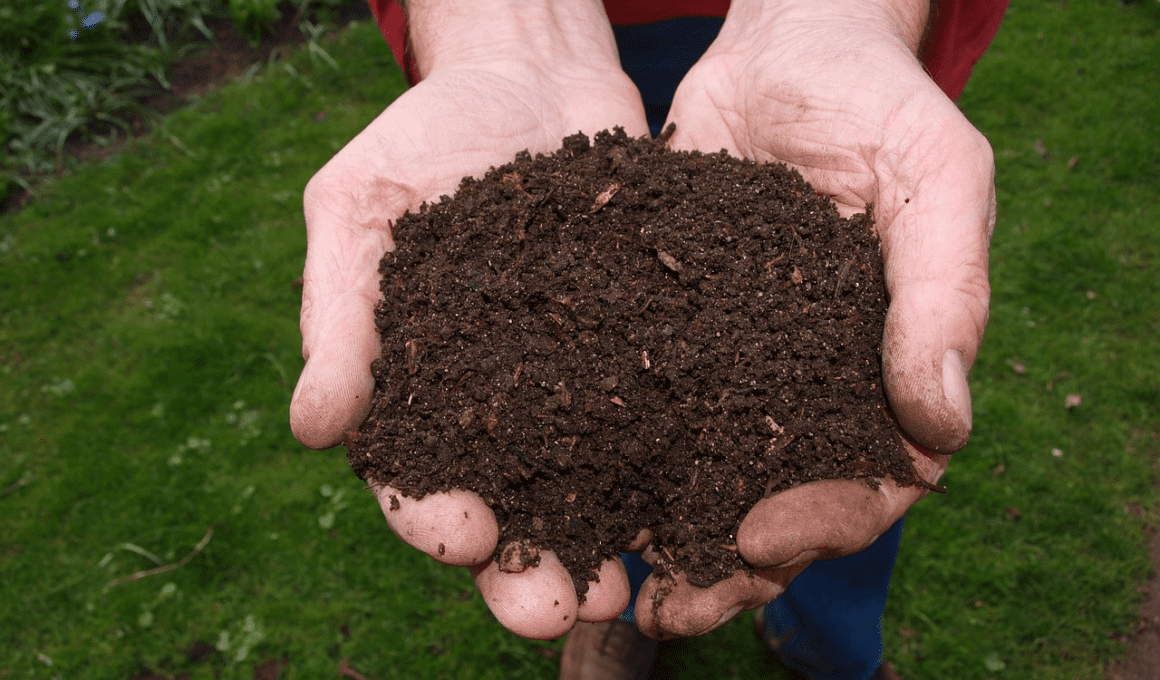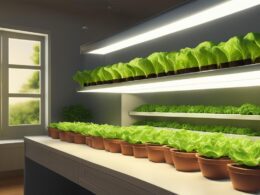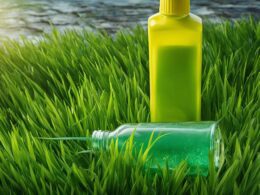Do you want to improve your backyard garden while reducing household waste? Look no further than your seafood dinners! That’s right, shrimp shells can be composted for a range of benefits, including aeration, minerals, and high nitrogen content.
Plus, the chitin in shells promotes plant health and disease resistance, while the calcium carbonate can raise pH levels in compost.
But how do you compost shrimp shells effectively? Don’t worry, it’s easier than you think. By burying the shells properly and drying and crushing them beforehand, you can avoid attracting pests and speed up decomposition.
In this article, we’ll explore the benefits of composting shrimp shells and provide tips for successful shrimp shell composting. Get ready to say ‘shell yeah!’ to better gardens.
Quick Takeaways
- Composting shrimp shells provides aeration, minerals, and high nitrogen content, as well as promoting plant health and disease resistance through chitin.
- Calcium carbonate in shrimp shells can raise pH levels in compost and create a nutrient-rich environment for plants to thrive, making it a sustainable and natural way to improve gardens and reduce waste.
- Crushing and drying shrimp shells beforehand can speed up decomposition and prevent pests, and hot composting and vermicomposting are effective methods for composting shrimp shells.
- Properly burying crushed and dried shells at least 8 inches deep can avoid pests, and shells can also be used as natural fertilizer or to make broth for cooking.
Benefits of Composting Shrimp Shells
You can compost shrimp shells raw or cooked, and they provide aeration, minerals, and high nitrogen to your compost, as well as chitin for plant health and disease resistance. Chitin is a tough, fibrous substance found in shrimp shells that helps to protect plants from harmful pests and diseases.
By adding shrimp shells to your compost, you can create a nutrient-rich environment for your plants to thrive in. Composting shrimp shells is an easy and cost-effective way to improve the quality of your soil. As the shells break down, they release essential nutrients and minerals that are beneficial to plant growth.
Ground up shells make for a rich compost that can be used to improve the health and productivity of your garden. By incorporating shrimp shells into your compost pile, you can create a sustainable and natural way to improve your garden, while also reducing household waste.
Why are Shrimp Shells and Corn Husks Good for Composting?
Composting corn husks and cobs is an excellent way to reduce waste and enrich the soil. Shrimp shells and corn husks are beneficial because they provide valuable nutrients and create aeration in the compost pile. As these materials break down, they release nitrogen and carbon, vital components for healthy plant growth. Ultimately, composting these waste products contributes to sustainable gardening practices and reduces landfill waste.
How to Compost Shrimp Shells
Start by crushing and drying the shrimp shells to speed up their decomposition process. Simply spread the shells out on a flat surface and let them dry in the sun. Once they are dry, crush them with a rolling pin or use a food processor to grind them into small pieces. This will help the shells break down faster and provide nutrients to your compost.
There are two main ways to prepare shrimp shells for composting: hot composting and vermicomposting. Hot composting involves creating a pile of organic matter that heats up as it decomposes. This method is best for larger quantities of shells and will break them down quickly. Vermicomposting, on the other hand, involves using worms to break down organic matter. Using vermicomposting with shrimp shells can provide nutrients and grit for the worms, making it a great addition to your worm bin. Whichever method you choose, incorporating shrimp shells into your compost will benefit both your garden and the environment.
| Ways to Prepare Shrimp Shells for Composting | Using Vermicomposting with Shrimp Shells |
|---|---|
| Crush and dry shells to speed up decomposition | Add shells to worm bin for added nutrients |
| Use a food processor to grind shells into small pieces | Shrimp shells provide grit for worms |
| Hot composting breaks down shells quickly | Vermicomposting is a great addition to your worm bin |
| Cook shells to reduce odor and unwanted visitors | Composting shrimp shells benefits both garden and gardener |
| Shrimp shells from lobster or crab can also be composted | Ground up shells make rich compost for gardens |
Tips for Successful Shrimp Shell Composting
To ensure successful decomposition, you need to properly bury the crushed and dried shrimp shells at least 8 inches deep in your compost pile. This is because shrimp shells are prone to attract pests if they’re not buried deep enough.
It’s important to ensure that the shells are dry and crushed before adding them to your compost pile. This will speed up the decomposition process, prevent unwanted odors, and reduce the chances of attracting unwanted visitors.
Composting shrimp shells can present some challenges, but there are also alternative uses for them. For example, you can use ground up shrimp shells as a natural fertilizer for your garden. Shrimp shells are high in nitrogen, which makes them an excellent source of nutrients for your plants.
You can also use shrimp shells to make a nutrient-rich broth for cooking or use them to create a calcium supplement for your chickens. By finding alternative uses for shrimp shells, you can reduce household waste and improve your backyard landscape.
Frequently Asked Questions
Can shrimp shells be added to a compost bin with other kitchen scraps and yard waste?
You can add shrimp shells to your compost bin with other kitchen scraps and yard waste. The shells provide aeration, minerals, and high nitrogen to compost. Using shrimp shell compost as a natural pesticide and composting seafood waste also benefits your garden.
Are there any special precautions that need to be taken when composting shrimp shells to avoid attracting pests?
To avoid attracting pests when composting shrimp shells, take precautionary measures. Bury shells deep in the compost pile, dry and crush them, or cook them to reduce odor and unwanted visitors. Proper pest management ensures a safe and healthy composting process.
How long does it typically take for shrimp shells to fully decompose in a compost pile?
Shrimp shells decompose in 6-12 months, depending on the size and conditions of the compost pile. Benefits of composting seafood waste include providing nutrients and improving soil structure. Alternative uses for shrimp shells in gardening include making compost and vermicomposting.
Can compost made from shrimp shells be used for indoor plants as well as outdoor gardens?
Yes, compost made from shrimp shells can be used for both indoor plants and outdoor gardens. The nutrient content is comparable, providing minerals and nitrogen for healthy growth. Use caution with indoor use to avoid attracting pests.
Are there any types of soil or plants that should not be fertilized with shrimp shell compost?
Not all soils and plants are compatible with shrimp shell compost. Some plants may not tolerate the high nitrogen content or pH levels. Check plant suitability before using and test soil compatibility first.








